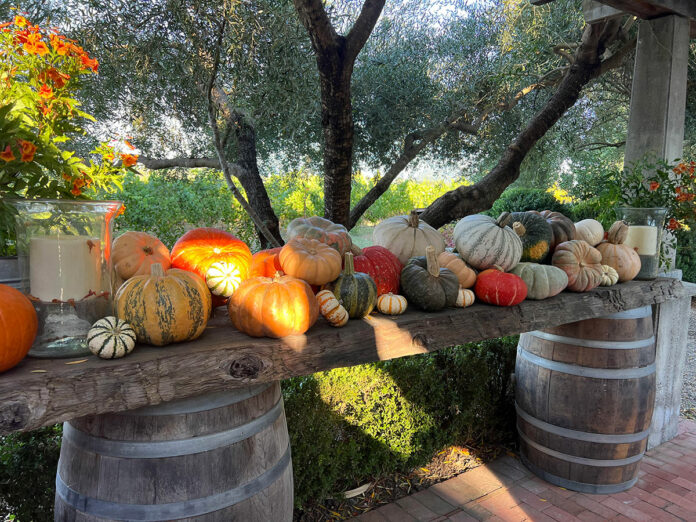
Autumn light slashes through a dazzling collection of pumpkins. Once upon a time, it seemed all pumpkins were orange. Now, they come in a plethora of colors ranging from orange to red, yellow, green, white and striped combinations.
Pumpkin is a vernacular term for winter squash which comes in different forms. The genus and species of the common orange field pumpkin is Cucurbita pepo. But so are different-colored and different-shaped pumpkins of the same species. Differences are identified at subspecies levels. Color and shapes are so varied that varieties often look nothing like the round orange Connecticut Field pumpkin carved at Halloween. Variety is partly due to planting environments around the globe over long periods of time.
Pumpkin seeds reportedly date back to 7000 B.C. in Central America, making them one of the oldest cultivated plants. With every part of the plant edible—skin, leaves, flowers, pulp, seeds and stems—easy-to-grow pumpkins were an important source of nutrition.
Fun facts: Orange round and orange-warted pumpkins are genus species, subspecies: Cucurbita pepo, pepo; crooked necks are subspecies ovifera; acorn squash are subspecies turbinate; yellow squash with a crooked neck are subspecies torticollia.
Pumpkins are fruit, not vegetables. Anything that starts with a flower is technically fruit. Nuts are fruit. Squash are fruit. Tomatoes are fruit. Cucumbers, eggplants, beans, peppers, corn: all fruit.
The word “pumpkin” comes from the Greek, pepon, meaning large melon… Approximately 40% of America’s pumpkin crop is grown in Illinois. About 95% of the processing of pumpkins happens in Illinois, which is the location of Libby’s… Legend has it that Washington Irving’s headless horseman used a pumpkin as a replacement head… Smashing Pumpkins, an alternative rock band formed in Chicago in 1988, sold 30 million albums, one of which was called Mellon Collie.







